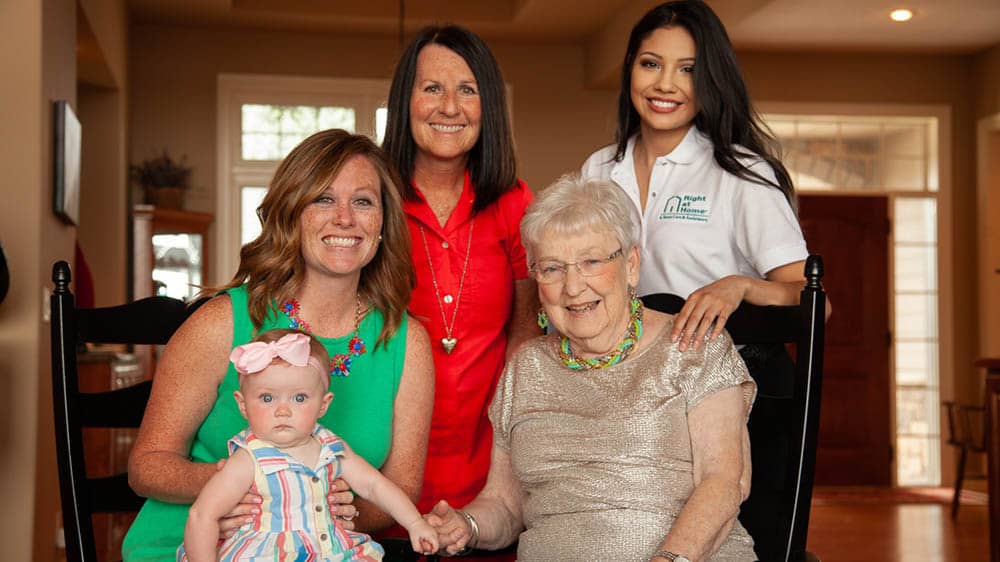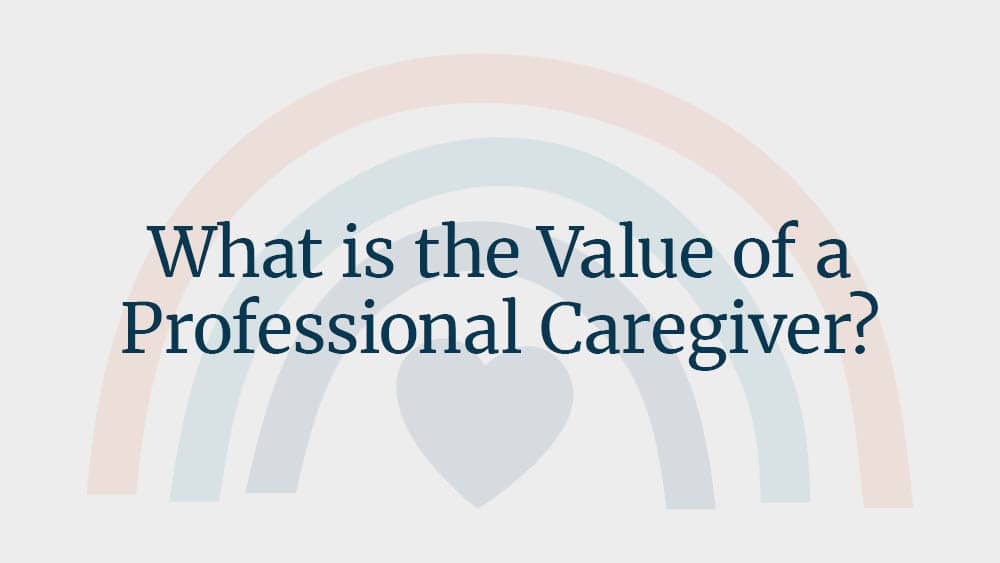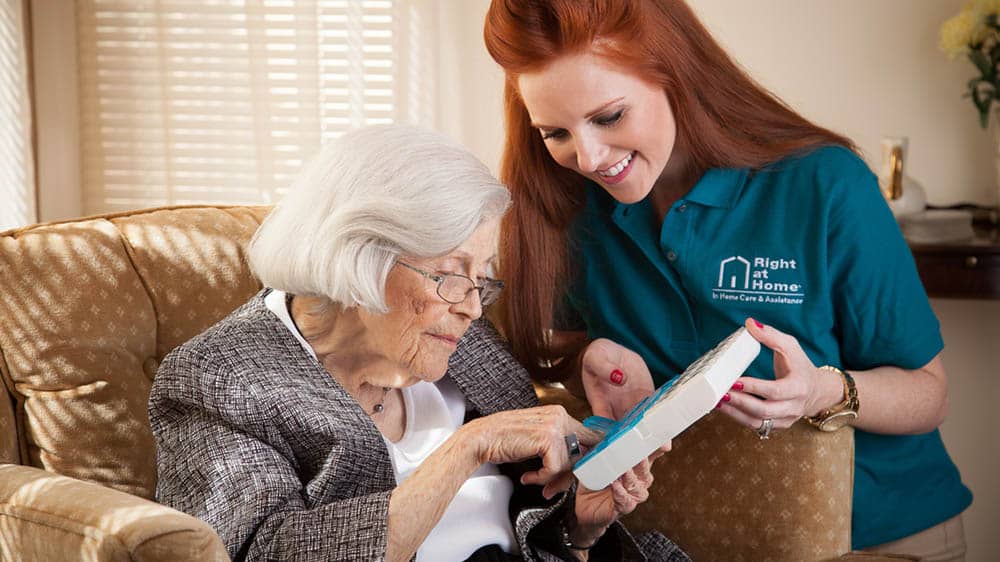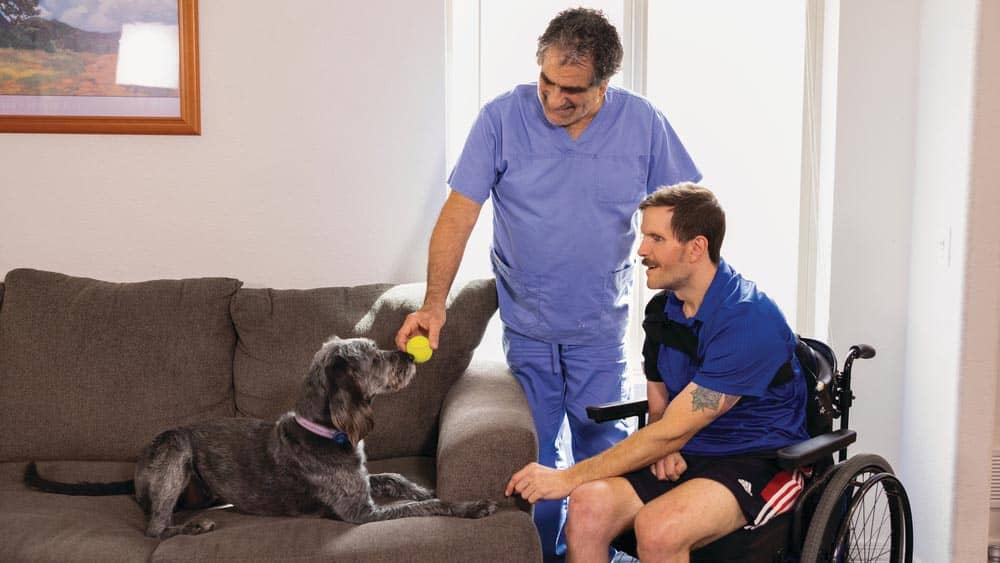
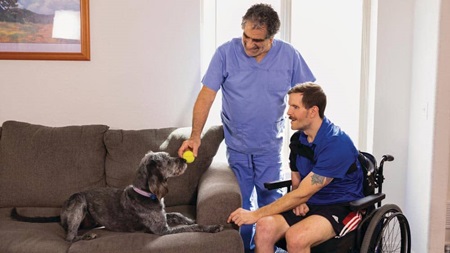
Is Home Care Only for the Elderly?
How in-home care helps all adults who need assistance.
We commonly think disorders, illnesses, and health conditions are confined to seniors, but that is a misconception. You may be surprised to learn that up to 1 in 4 adults in America lives with a disability, as reported by the Centers for Disease Control and Prevention. This includes any condition of the body or mind that makes it more difficult for a person to do certain activities and interact with the world around them. Some of these conditions include:
- Developmental disabilities. Examples of developmental disabilities include attention-deficit/hyperactivity disorder (ADHD), autism, behavioral disorders, brain injury, cerebral palsy, Down syndrome, fetal alcohol syndrome, intellectual disability, and spina bifida.
- Traumatic brain injuries. Causes of traumatic brain injuries include falls, vehicle-related collisions, violence, sports injuries, explosives, and combat injuries.
- Neurological disorders. Examples of neurological disorders include Alzheimer’s disease, Parkinson’s disease, multiple sclerosis, and epilepsy.
- Paraplegia and quadriplegia. Paraplegia and quadriplegia are forms of paralysis that can be caused by neuromuscular disorders, stroke, or spinal cord injuries.
- Neuromuscular disorders. Examples of neuromuscular disorders include muscular dystrophy, myasthenia gravis, and amyotrophic lateral sclerosis (ALS or Lou Gehrig’s disease).
Alzheimer’s and Parkinson’s are most often attributed to the elderly; however, about 5% to 6% of people with Alzheimer’s develop it before age 65, according to the Mayo Clinic. In addition, the National Institute of Neurological Disorders and Stroke estimates that 5% to 10% of people with Parkinson’s received their diagnosis before age 50.
Home Care Isn’t Just for Seniors
While many home care services cater to older people, Right at Home offers home care to all adults age 18 and older who find living at home challenging. Right at Home can help these individuals by assisting with activities of daily living (ADL) and instrumental activities of daily living (IADL). Activities of daily living are the fundamental skills required to care for oneself independently; examples include personal hygiene and eating. Instrumental activities of daily living are those activities that allow a person to live independently in a community; examples include cooking and cleaning. Right at Home’s companion and personal care services help with IADL and ADL. Here is a short list of what these services entail.
Companion Care
- Running errands and providing transportation to appointments, the grocery store, and leisure outings.
- Homemaking, including light housekeeping and meal preparation.
- Wellness support, such as safety supervision, light exercise encouragement, cognitive stimulation, and meal planning.
- Socialization, such as reading aloud, playing games, engaging with hobbies, and accompaniment on walks and outings.
- Health reminders, including medication reminders and managing medical appointments and health screenings.
Personal Care
- Mobility assistance, including walking assistance, paraplegia and quadriplegia care, wheelchair assistance, and transferring.
- Bathing assistance, including bed baths, showering, getting in and out of the bathtub, and standby assistance.
- Personal hygiene care, such as grooming, dressing, oral care, incontinence care, and bathroom assistance.
Nursing Services
Some Right at Home locations can also provide nursing care for chronic health conditions. These services include:
- Medication management, including medication administration, IV administration, and diabetes management.
- Medical support, including simple wound care/dressing changes, catheter care, ostomy/colostomy care, oxygen therapy, and tube feeding.
- Care management, including RN skilled assessments, RN case management, RN hospice support, and vital signs monitoring and reporting to health care providers.
For an in-depth look at our services, visit Right at Home*.
How Home Care Helps Families
The overall goal of providing home care is to allow the person receiving care to safely live independently, recover from an episodic event, or just enjoy an overall improved quality of life. Most people want to live in the comfort of their homes versus a care facility. Home care allows them to do that.
For families who are concerned about their loved ones or are actively helping to care for them, home care is a source of relief. Family members often don’t live nearby, are employed full time, or are still raising their children. They like having a professionally trained caregiver check in on mom and help ensure she is safe and socially engaged.
If you are a caregiver of an adult with a disability, medical condition, or disorder, Right at Home offers many resources you might find helpful, including:
- An Adult Caregiving Guide that provides steps to help ensure a parent, spouse, relative, or friend receives needed care.
- An Aging-in-Place Guide that identifies the things in homes that may need to be addressed to help ensure seniors stay safe.
- A Dementia and Cognitive Change Guide that identifies a three-pronged approach to caring for someone who has received a dementia diagnosis.
- A Ways To Pay for In-Home Senior Care Guide that helps families understand the potential funding sources to help pay for in-home care services.
- A Fall Prevention Guide that helps families assess a loved one’s house for anything that might be a safety risk.
- An Understanding Grief Guide that helps families understand the intense emotions that come with the loss of a loved one.
- A RightConversations Guide that identifies the communication barriers families often experience and provides tips on how to overcome them.
If you are a family caregiver, it’s important to take care of yourself mentally and physically. Get enough sleep, eat right, keep up with friends and hobbies, join a support group, and always keep medical appointments and screenings. If you don’t take care of yourself, it will be difficult to keep up with the care of another. Right at Home offers respite care so you can take a break from your caregiving duties. Use our office locator to find the office closest to you and ask for a FREE in-home consultation.
If you are interested in receiving tips, advice, and ongoing information about caregiving, subscribe to our monthly e-newsletter.
*In-home care services may vary by location.





